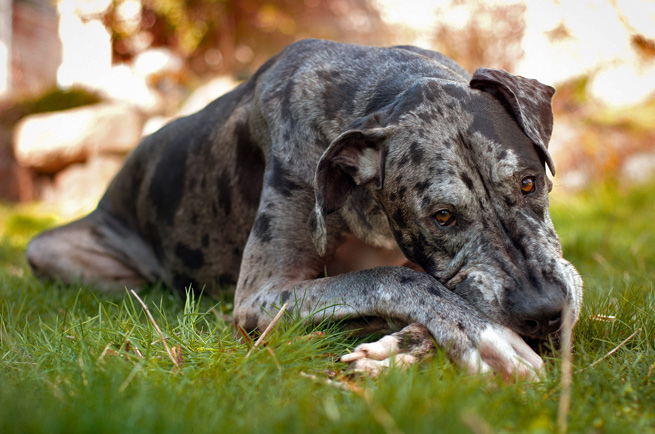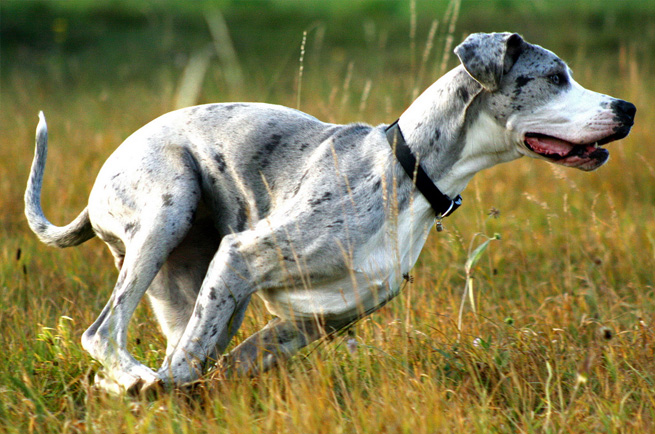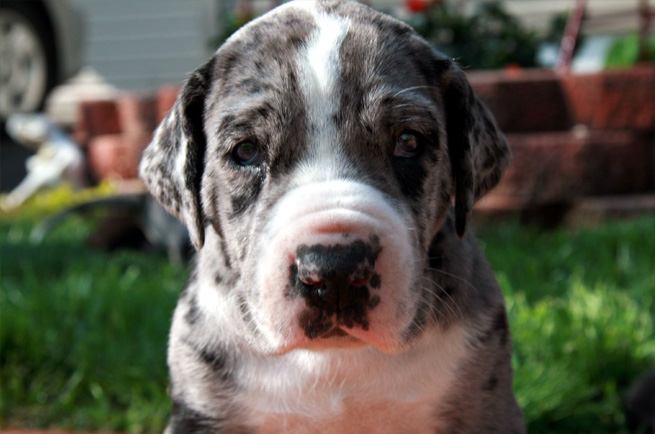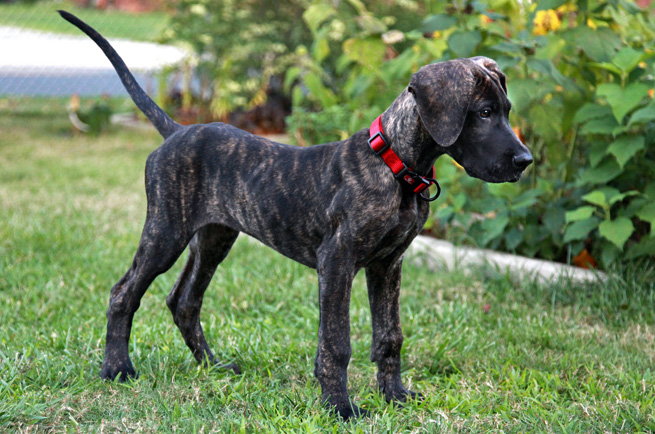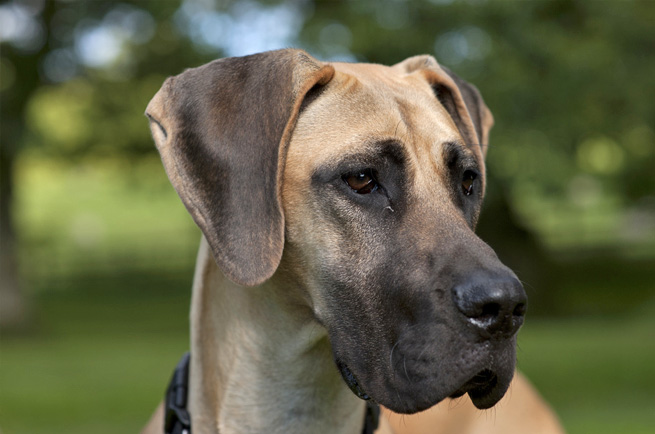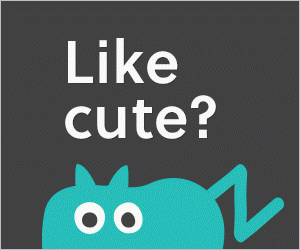Great Dane
Most people will know a Great Dane is coming when they see one! The Great Dane is a tall and muscular dog that has even been likened to a small horse. They have a rectangular head and body and a short and dense coat. Their large stature and noble bearing give them the appearance of being a dignitary of the canine world.
Other Names
German Mastiff, Dane, Apollo of Dogs
Country of Origin
Germany
Colour
Comes in many colours, including fawn, black, blue, brindle and harlequin. They can be solid or speckled.
Size
Large
Height / Weight
Over 18 months of age the minimum height of dogs should ideally be 76cms at the withers and weigh 54kgs. Bitches, of the same age should have a minimum height of 71cms at the withers and weigh 46kgs
Health
It is important to choose a puppy from healthy breeding stock to limit the chances of breed-specific health problems. Breeders do screen for hip dysplasia, eye problems and bloat, but due to it's giant size the Dane will still have frequent joint and bone problems. The correct food and exercise at a young age may help prevent some of these issues. Pressure sores can also be an issue so your Great Dane will need soft bedding to support their frame.
Life Span
5-10 years
Intelligence
The Dane is an intelligent dog who is well suited to many types of work as long as they are trained young. As they are so large, puppies get big fast and before you know it a large and untrained puppy can be a serious issue. Training should be consistent and firm, though an experienced handler should not find the Great Dane difficult to manage.
Exercise
Medium
Suitability (Children)
Low
Feeding
Feeding a Great Dane is like feeding a small horse. Consult with a breeder or vet to ensure you feed your Great Dane the right food and the right amounts to avoid issues later on. Supplements, especially calcium which has not been recommended by the breeder, should be avoided.
Feeding Cost
$20-$30 + p/w
Other Cost
Extra costs can be associated with the Giant size of the dog.
Excercise
While a giant animal, the Great Dane doesn't actually require that much exercise. Be careful not to over-exercise as the dog is growing, this can cause problems in muscles, bones and joints. Danes like spending time outdoors with their family, but also enjoy lazing in the house with their pack.
Hair Shed
Little
Ailments
It is important to choose a puppy from healthy breeding stock to limit the chances of breed-specific health problems. Breeders do screen for hip dysplasia, eye problems and bloat, but due to it's giant size the Dane will still have frequent joint and bone problems. The correct food and exercise at a young age may help prevent some of these issues. Pressure sores can also be an issue so your Great Dane will need soft bedding to support their frame.
Grooming
They have short and dense fur which can easily be groomed with a rubber mitt to remove loose and dead hairs, it may just take some time to groom the whole horse, em—I mean dog!
Grooming Frequency
Once a week
Trimming
None
A shorter dog than the modern Great Dane is believed to have been drawn on Egyptian tombs as far back as 2200 BC. These dogs travelled around the world with Traders before the breed we know today is believed to have come to be in Germany. Here the original, mastiff-esque dog was bred with greyhounds to give the tall, muscular but still slender Dane we know and love today. The Dane were used as bull baiters, before eventually being used by the nobility to hunt boar in 1592, and in the 1800s becoming popular with gamekeepers for large game hunting. The first Great Dane clubs were started in the UK in 1885 and in America in 1889.
comments powered by Disqus

